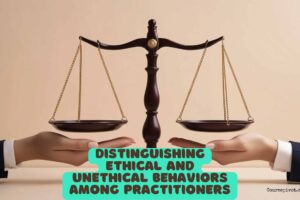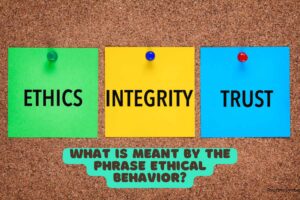
What is meant by the Term Environmental Justice
In 1982, a predominantly Black community in Warren County, North Carolina, lay down in front of trucks carrying toxic soil to protest what they saw as environmental racism. That moment sparked a movement. The term environmental justice was born from the realization that pollution doesn’t hit everyone equally—low-income communities and communities of color often bear the heaviest burden. Today, the U.S. Environmental Protection Agency defines environmental justice as “the fair treatment and meaningful involvement of all people regardless of race, color, national origin, or income” in environmental decisions (EPA, 2024).
Table of Contents
This blog explores exactly what environmental justice means, why it exists, and how it affects millions of lives every day.
The Core Meaning of Environmental Justice
At its heart, environmental justice is the principle that no group should disproportionately suffer the negative effects of environmental hazards, nor be excluded from environmental benefits. It has two inseparable pillars:
- Distributive justice – Who gets the pollution and who gets the clean air, water, and green spaces?
- Procedural justice – Are affected communities actually included in the decisions that impact them?
When either pillar fails, you get environmental injustice. Think of it as the environmental version of “your zip code shouldn’t determine your life expectancy.”
Roots of the Movement: It Started with Data, Not Just Protest
A landmark 1987 study by the United Church of Christ revealed something shocking: race was the single strongest predictor of where toxic waste facilities were located in the United States—even more than income (United Church of Christ, 1987). Communities with the highest concentration of commercial hazardous waste sites were 56% people of color, compared to just 12% in areas without such facilities.
That report gave the movement hard numbers. Since then, countless studies have confirmed the pattern worldwide—from Cancer Alley in Louisiana to the smog-choked neighborhoods of South Durban, South Africa.
Real-World Examples That Make the Concept Concrete
Flint, Michigan (2014–present)
The decision to switch Flint’s water source to save money led to lead contamination affecting 100,000 residents, 41% of whom live below the poverty line and over half are Black. Residents complained of rashes and strange-tasting water for months before officials acknowledged the crisis (Michigan Civil Rights Commission, 2017).
Cancer Alley, Louisiana
An 85-mile stretch along the Mississippi River hosts over 150 petrochemical plants. Communities here—mostly Black and low-income—face cancer risks up to 50 times the national average (ProPublica, 2023). Yet new plants continue to receive permits.
Standing Rock, North Dakota (2016)
The Dakota Access Pipeline was rerouted near the Standing Rock Sioux reservation after wealthier, predominantly white communities upstream objected. Tribal leaders argued the pipeline threatened sacred sites and their water supply—classic procedural injustice.
These aren’t isolated incidents. They reveal systemic patterns.
The Four Key Elements of Environmental Justice
Modern frameworks, including President Biden’s Justice40 Initiative, break the concept into four interconnected parts:
- Avoiding disproportionate harm – Preventing the placement of polluting facilities in already burdened communities.
- Ensuring meaningful involvement – Giving communities a real seat at the decision-making table, not just a public comment period after decisions are made.
- Providing equitable access to environmental benefits – Parks, tree canopy, clean energy, flood protection, and healthy food should not be luxuries reserved for affluent areas.
- Addressing cumulative impacts – Recognizing that one more factory in a neighborhood already surrounded by refineries, highways, and rail lines isn’t the same as one factory in a pristine suburb.
Why Environmental Justice Matters More Than Ever in 2025
Climate change is amplifying existing injustices. Heat waves kill more people in urban heat islands—neighborhoods with few trees and lots of concrete—where low-income residents and people of color are overrepresented (EPA Heat Island Report, 2024). Sea-level rise threatens coastal communities that often lack the political power or resources to relocate.
At the same time, the transition to clean energy creates new opportunities—and new risks. If solar farms and battery plants are built without community input or benefit-sharing, we simply replace one injustice with another.
Practical Steps Toward Achieving Environmental Justice
Communities and policymakers are taking action. Here are proven approaches:
- Cumulative impact laws – California and New Jersey now require regulators to consider existing pollution burdens before approving new facilities.
- Community benefit agreements – Residents negotiate directly with developers for jobs, solar panels on rooftops, or local hiring commitments.
- Environmental justice mapping tools – The EPA’s EJScreen and Climate and Economic Justice Screening Tool help identify overburdened areas.
- Tribal consultation requirements – Strengthened rules ensure Native nations are consulted early in project planning.
- Green infrastructure equity – Cities like Philadelphia and Milwaukee prioritize tree planting and permeable pavement in historically disinvested neighborhoods.
Key Takeaways
Environmental justice is both a moral imperative and a practical framework. It recognizes that pollution follows the path of least resistance—often straight into communities with the least political power.
The term goes beyond “everyone deserves clean air.” It demands we fix the systems that decide whose air stays dirty.
True progress requires acknowledging historical patterns, listening to affected communities, and redesigning decision-making processes. When we get environmental justice right, we don’t just reduce harm—we create healthier, more equitable places for everyone to live.
Because clean air, safe water, and a stable climate shouldn’t be privileges. They’re rights. And environmental justice is the movement making sure those rights are finally honored equally.
Cite this article
You can copy and paste your preferred citation format below.
Martin, L. & Arquette, E.. (2025, November 25). What is meant by the Term Environmental Justice. Coursepivot.com. https://coursepivot.com/blog/what-is-meant-by-the-term-environmental-justice/



